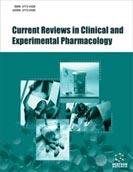Abstract
Ranitidine is a well known H2 blocker antihistaminic drug used for symptomatic relief of heartburn, indigestion, acid indigestion, peptic ulcer and hyperacidity. However, On 13th September 2019, the United States Food and Drug Administration (USFDA) has given an alerting statement regarding the presence of nitrosamine impurity called N-nitrosodimethylamine (NDMA) in ranitidine containing products. Recently, some pharmaceutical companies have also recalled their ranitidine containing products from the market. Thus, there is a need to understand about these impurities in ranitidine containing products. The first part of this article highlights the mechanism of action of ranitidine in established therapeutic indications along with its adverse drug reactions and contraindications. Further, the introduction of genotoxic impurities in pharmaceutical products along with its types and mechanism of toxicity of ranitidine containing genotoxic impurity have been discussed.
Keywords: Ranitidine, H2 blocker, genotoxic impurities, N-nitrosodimethylamine, pharmaceutical products.
Graphical Abstract
[http://dx.doi.org/10.2165/00003495-198224040-00002] [PMID: 6128216]
[http://dx.doi.org/10.1056/NEJM198312013092206] [PMID: 6314139]
[http://dx.doi.org/10.1016/S0378-4347(00)80255-8] [PMID: 6271798]
[http://dx.doi.org/10.1111/j.1365-2125.1980.tb01739.x] [PMID: 6107119]
[http://dx.doi.org/10.1136/bmj.k3851]
[http://dx.doi.org/10.1016/0163-7258(96)00062-9] [PMID: 8910949]
[http://dx.doi.org/10.1016/j.mrgentox.2007.05.004] [PMID: 17644026]
[http://dx.doi.org/10.1016/j.jpba.2008.06.009] [PMID: 18657926]
[http://dx.doi.org/10.1177/1091581809349195] [PMID: 19966139]
[http://dx.doi.org/10.1021/op100118e]
[http://dx.doi.org/10.1016/0165-1110(84)90016-2] [PMID: 6374443]
[http://dx.doi.org/10.1016/j.jpba.2009.11.023] [PMID: 20031361]
[http://dx.doi.org/10.1186/s12935-018-0629-5] [PMID: 30245591]
[http://dx.doi.org/10.1002/jcp.27077] [PMID: 30145793]
[http://dx.doi.org/10.1002/hep.27732] [PMID: 25645722]
[http://dx.doi.org/10.1038/s41419-018-1272-8] [PMID: 30622238]
[http://dx.doi.org/10.1016/j.molimm.2017.02.018] [PMID: 28314211]
[http://dx.doi.org/10.1038/nrgastro.2010.213] [PMID: 21293511]
[http://dx.doi.org/10.1016/j.imlet.2017.02.016] [PMID: 28286228]
[PMID: 15540801]
[http://dx.doi.org/10.1139/cjpp-2017-0768] [PMID: 29558627]
[http://dx.doi.org/10.1016/j.bbadis.2017.12.031] [PMID: 29287776]
[http://dx.doi.org/10.1007/s004410051073] [PMID: 9582401]
[http://dx.doi.org/10.1155/2017/2540540]
[http://dx.doi.org/10.1053/j.gastro.2012.05.049] [PMID: 22687286]
[http://dx.doi.org/10.1016/j.cld.2008.07.002] [PMID: 18984471]
[http://dx.doi.org/10.1016/j.jhep.2018.10.015] [PMID: 30367898]
[http://dx.doi.org/10.1172/JCI66025]
[http://dx.doi.org/10.1136/gutjnl-2011-301494] [PMID: 22362915]
[http://dx.doi.org/10.1002/path.1711700203] [PMID: 8345406]
[http://dx.doi.org/10.1002/hep.23435] [PMID: 20162727]
 17
17



